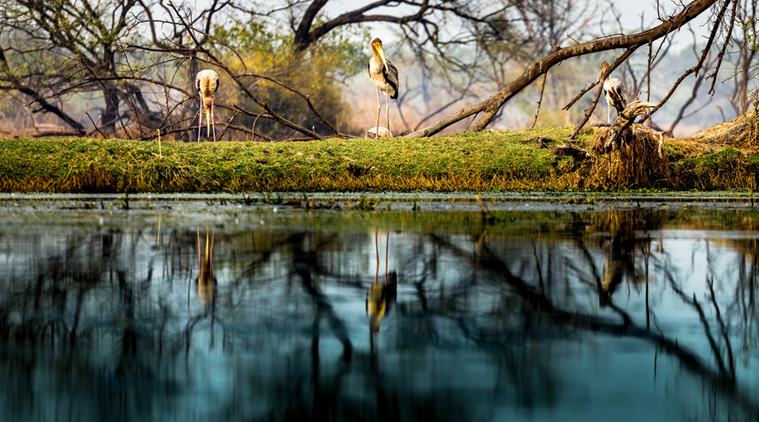 India has recorded 1,317 bird species against close to 10,000 species found worldwide. Of 1,317 species recorded in India, 72 are endemic to the country. (Rerpresentational Image)
India has recorded 1,317 bird species against close to 10,000 species found worldwide. Of 1,317 species recorded in India, 72 are endemic to the country. (Rerpresentational Image)
After tiger and elephant conservation plans, the Ministry of Environment, Forest and Climate Change (MoEFCC) has now proposed a 10-year plan to protect birds and conserve their habitats. The draft plan, ‘Visionary perspective plan (2020-2030) for the conservation of avian diversity, their ecosystems, habitats and landscapes in the country’, released earlier this month is open to suggestions and comments from all the stakeholders.
India has recorded 1,317 bird species against close to 10,000 species found worldwide. Of 1,317 species recorded in India, 72 are endemic to the country. The draft plan envisages 15 major programmes and activities, which will be implemented over short-term (2020-24), medium-term (2024-27) and long-term (2027-30). These programmes include conservation of migratory bird species, protected areas (PA) and coastal and marine ecosystems with high avian diversity, curbing illegal trafficking, surveillance and monitoring of avian diseases, among others.
Of 870 protected areas such as national parks and wildlife sanctuaries, 554 sites have been designated ‘Important bird and biodiversity areas (IBA)’. Of these 554 sites, 219 are outside the protected area network and are under severe anthropogenic pressure, a report stated.
The short-term plan suggests conducting bird surveys/census in IBAs outside protected area network, urban centres. It also calls for quantifying economic value of ecosystem goods, services and functions mediated through the establishment of IBAs. The plan also highlighted that there are 2.01 lakh wetlands (above 2.25 hectares) in the country, most of which are under stress due to the impact of urbanisation and agricultural run-offs. They require specific management plans for conservation: for instance, the plan noted the alarming decline in the population of vultures, which feed on carrion, that has led to an increase in the population of stray dogs, especially in urban areas. A study has found that this abrupt increase in stray dog population resulted in high rates of rabies incidences, costing the country about Rs 3,400 crore from 1993 to 2006.
According to an assessment of International Union for Conservation of Nature (IUCN) 2018, a total of 100 species of Indian birds are classified as ‘threatened’. Of these, 17 are categorised as ‘critically endangered’, 20 as ‘endangered’ and 63 as ‘vulnerable’. It is documented that 270 species (21 per cent) of Indian avifauna fall under the ‘rare’ category. These include raptors, pheasants, bustards, hornbills, cranes, storks and others. Together they are categorised as ‘rare, endangered and threatened (RET)’ bird species.
The draft plan aims at the reintroduction of RET bird species to native habitats.